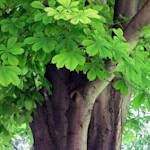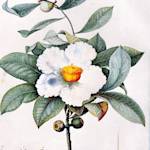Haine's Orange Mangrove, Bruguiera hainesii
2010 CE • Papua New Guinea, Indonesia, Australia
"More than one in six mangrove species worldwide are in danger of extinction due to coastal development and other factors, including climate change, logging, and conversion for aquaculture" - IUCN It is estimated that there are fewer than 250 mature trees of Haine's Orange Mangrove remaining, although a recent discovery of 49 trees in Australia is a glimmer of hope for this incredibly rare species. Mangroves are keystone species, providing essential habitat and coastal protection. It is estimated that 80% of global fish catches are directly or indirectly associated with mangrove forests, making their protection essential for humans and nonhumans.
Veettil, Bijeesh Kozhikkodan, et al. "Rapidly diminishing mangrove forests in Myanmar (Burma): a review." Hydrobiologia, vol. 822, no. 1, Oct. 2018, pp. 19+. Gale Academic OneFile, link.gale.com/apps/doc/A548601956/AONE?u=nypl&sid=bookmark-AONE&xid=a4302b95. Accessed 11 Jan. 2022. Cooper, W. E., et al. “Bruguiera Hainesii C.G.Rogers (Rhizophoraceae), an Endangered Species Recently Discovered in Australia.” Austrobaileya, vol. 9, no. 4, Queensland Herbarium, 2016, pp. 481–88, http://www.jstor.org/stable/44648648. “Mangrove Forests in Worldwide Decline.” IUCN, 9 Apr. 2010, www.iucn.org/content/mangrove-forests-worldwide-decline.
Image: wan_hong via Flickr, CC BY-NC-SA 2.0 DEED Attribution-NonCommercial-ShareAlike 2.0 Generic


Learn about Maya Lin’s fifth and final memorial: a multi-platform science based artwork that presents an ecological history of our world - past, present, and future.

Discover ecological histories and stories of former abundance, loss, and recovery on the map of memory.

Learn how we can reduce our emissions and protect and restore species and habitats – around the world.

See how art can help us rethink the problems we face, and give us hope that each one of us can make a difference.

Help make a global memorial something personal and close to home. Share your stories of the natural world.


